For Holocaust history, the territory of Ukraine is one of the crucial spaces. By the middle of 1941, about 2.7 million Jews were living in the territory of what today is the independent state of Ukraine, including the Crimean peninsula. Only about 100,000 of them survived the war in areas under German rule. In less than two years, about 60% of Ukraine’s pre-war Jewish population was murdered.
Taking this into account, already in 2015 the European Holocaust Research Infrastructure (EHRI) devoted a chapter in its Online Course in Holocaust Studies to the Holocaust in Ukraine. This special series of the EHRI Document Blog aims to further advance this research direction and create a space for Ukrainian Holocaust researchers to present their latest results, especially in these extraordinarily tough times.
Immediately after the outbreak of Russia’s invasion of Ukraine on February 24, 2022, EHRI issued a statement in which it strongly condemned the unprovoked and inexcusable attack on a sovereign country. Simultaneously, EHRI started to explore ways to help Ukrainian scholars at risk and make Ukraine and its researchers more visible in the field of Holocaust Studies, including this special series in the EHRI Document Blog. It works closely together with its Ukrainian partner institution, the Center for Urban History in Lviv.
The Holocaust in Ukraine: contemporary historiographical trends and the need for new sources
Ever since the publication of Jan T. Gross’ monograph Neighbors,1 research on the Holocaust in Eastern Europe has increasingly shifted towards the use of eyewitness accounts. This became a logical consequence of the bigger shift of the “era of the witness” since 1990. Studies by Omer Bartov,2 Jan Grabowski,3 Tim Cole4 and many other historians rely not just on archival documents, but also, for a significant part, on testimonies by Holocaust survivors. These testimonies represent mostly one perspective on the events of the Holocaust—the viewpoint of the victims. By connecting memoires and testimonies to documents and materials from German archives, it is also possible to incorporate the perspective of the perpetrators. A third dimension, however, has thus far remained in the margin: the perspective of neighbors (or what used to be called bystanders).
Another recent historiographical trend in academic research on the Holocaust is the tendency towards a multi-perspective approach, which examines the genocide within the context of the considerably more complex social dynamics of interethnic relations in the ethnic borderlands of Eastern Europe. Such an approach allows one to analyze the course of the Holocaust without stripping it of the broader context of local circumstances. These studies look beyond the events of World War II, exploring the factors that shaped the dynamics of interethnic relations long before the outbreak of the war. In this sense, it is a reappraisal of the longue durée approach. For example, the latest works by Omer Bartov,5 Jared McBride,6 Jeffrey Veidlinger7 It is worth noting that Jeffrey Veidlinger created in the 1990s Yiddish language interviews archive – The Archives of Historical and Ethnographic Yiddish Memories, AHEYM, URL: https://aheym.com/] and Raz Segal8 about the Holocaust in various parts of occupied Ukraine all take into consideration the broader social context of violence, as well as the long-term factors behind local interethnic relations, which could significantly affect the attitudes of the non-Jewish population vis-à-vis their Jewish neighbors.
These studies reveal certain obstacles with regard to the sources used. In many cases, the authors had to reconstruct the behavior, values and attitudes of non-Jewish neighbors (particularly of Ukrainians) through the prism of testimonies by Holocaust victims. This propensity is self-evident, since the largest oral history archives, such as the Fortunoff Video Archive, the Visual History Archive of the USC Shoah Foundation and the Yad Vashem video testimony archive, gather testimonies of Holocaust survivors. Accounts by Ukrainian neighbors are extremely rare in these collections. Most notably, the largest archive of this kind, the VHA of the USC Shoah Foundation, contains only sparse testimonies of Ukrainians who Yad Vashem recognized as Righteous among the Nations. As a result, scholars seeking to reconstruct the perspective of Holocaust witnesses in Ukraine are faced with a lack of available source material.
This perspective emerges partly thanks to the use of such types of sources as ChGK documents and secret police trials. Although the ChGK materials contain eyewitness testimony, they were mostly summarized, abbreviated or censored by commission officials. Therefore, they cannot be attributed to the genre of full-fledged oral testimonies, although until now they have helped many researchers to at least partially reproduce the perspective on the events of the Holocaust from the side of the surrounding non-Jewish population. The documents of secret police trials that took place in the post-war period are also of great value. Of course, they partially contain testimonies of Holocaust survivors, but mostly reflect the perspective of the local Ukrainian population. But even these documents cannot be attributed to the genre of full-fledged testimonies. First, a person who testifies as a suspect or even a witness in a police station will probably speak and behave much more stressful than in front of a researcher’s camera. Secondly, it was about investigations carried out by the secret police of a totalitarian state that could resort to torture and caused fear among the majority of the population. This could not but distort most of the testimonies. Anyway these sources are very important but they cannot supersede the real testimonies of ordinary people within of interview-based research projects.
One of the first to encounter this problem, back in the 1980s, was the Israeli historian Shmuel Spector. In his research on the Holocaust in Volhynia, he was one of the first to revert to witness testimonies. Yet the only such testimonies available to him were memoirs of ethnic Ukrainians who had emigrated to Western Europe or North America in the wake of World War II. Most of these people had a background of collaboration and/or affiliation with nationalist organizations and movements. Many had been directly or indirectly involved in carrying out the Holocaust. For this reason, Spector noted, “Their memoirs and articles written after the war ignore completely the Jewish issue. There are even individuals seeking to present the authors of these memoirs as those who had saved Jews or helped them in their predicament.”9 John-Paul Himka recently picked up on this observation. In his latest monography, Ukrainian Nationalists and the Holocaust, he concedes that Ukrainian memoirs mostly ignore the Holocaust.10 However, he is talking about memoirs by Ukrainian nationalists. What about the recollections by the majority of ethnic Ukrainians who weren’t nationalists? When the Holocaust is studied in the context of social history and the dynamics of intergroup violence, recollections of average Ukrainians are no less significant than those of active members of the Organization of Ukrainian Nationalists (OUN) or the Ukrainian Resistance Army (UPA).
The first to compile a sizable collection of testimonies by average Ukrainian villagers were Father Patrick Desbois and his organization Yahad-In Unum. Thanks to the Yahad-In Unum video testimony archive, a substantially broader range of involvement of local Ukrainians in the Holocaust has come to the fore. In particular, these recordings allowed Patrick Desbois to introduce the concept of small death job to academic discourse: the auxiliary tasks many local residents were forced to carry out, such as digging and covering mass graves, leveling the bodies of shot Jews, preparing food for the members of shooting squads, bringing victims to sites of mass killing and transporting their clothes after shootings.11 The video testimony archive of Yahad-In Unum clearly demonstrates that recollections by ethnic Ukrainians carry far greater value for Holocaust researched than has been assumed hitherto. The recording of video testimonies by Ukrainians has made it possible for researchers to study the perspective of neighbors of Jews on World War II firsthand, rather than by using testimonies of Holocaust victims (which may lead to distortions and inaccurate interpretations).
The Voices project: peculiarities and challenges of testimonies by Ukrainians about World War II in Volhynia
The aim of this text is to analyze testimonies from another extensive project to record testimonies of Holocaust witnesses in Ukraine. The name of the project is Voices (Holosy in Ukrainian). Its initiator and coordinator is the Ukrainian historian Gelinada Grinchenko. The project is carried out under the auspices of the Babyn Yar Holocaust Memorial Center. This blog post draws on witness testimonies recorded in 2020-2021 on the territory of the Volyn and Rivne Oblasts (together these oblasts make up the historical and cultural region of Western Volhynia). In the interwar period, this territory was part of Poland and was characterized by a specific social and political background, which left its mark on the course of the Holocaust in the region. Most of the testimonies recorded were given by ethnic Ukrainians born in the 1920s and 1930s, meaning they were old enough during World War II to remember the occupational regime and the Holocaust. Only a few interviews were held with carriers of “post-memory”, born in the immediate postwar period.
In the course of 2020-2021, 164 testimonies were recorded in Volhynia, using the methodology of narrative interviewing (video and audio recording). Nearly 70% of the respondents were women. This was the result of a severe gap between the life expectancies of men and women (on average, Ukrainian men live 10 years less than women). Therefore it is important to keep in mind that the perspective on World War II and the Holocaust in Volhynia discussed below reflects predominantly female views and ways of remembering.
Most of the Volhynian respondents in the project are simple village-dwellers who were born and very often spent their entire life in the same rural area (in some cases even in the same village), working the land. Many of them never went to school or received only a rudimentary education of 2-3 grades. Many respondents rarely or never listened to the radio or read newspapers (sometimes because of illiteracy or low literacy). For this reason, they were often out reach of direct influence by Soviet, Nazi or nationalist propaganda. Prior to World War II, Within the microcosmos of their villages and the surrounding areas, their families, often interacted with representatives of other ethnic groups (living, as they did, in a multi-ethnic borderland). Living close to Poles, Jews, Czechs, Slovaks and Germans (German settlers who arrived in Volhynia in the 19th century), in the same or in neighboring settlements, Ukrainian villagers would not always consider these other groups to be part of their own community—or “svoï” in Ukrainian. Perceptions of otherness were shaped mostly by linguistic, religious and ethno-cultural differences (the Poles, Jews, Czechs and ethnic Germans professed other religions, spoke other languages and had somewhat different cultural traditions). The preconceptions about the Other conveyed by the respondents result from the stereotypes prevalent in traditional communities, rather than from ideological influences (although in some cases these influences also come to the fore). Most respondents speak about World War II from a personal perspective, although their accounts are, of course, interspersed with elements of the great narratives about the war prevalent in the region (in the past, the Soviet narrative, today its nationalistic counterpart).
Not unlike Holocaust victims, the Ukrainian respondents have little sense of dates. Their accounts do not lend themselves as sources to establish an exact historical chronology. Most respondents reproduce the chronology of events on the basis of the cycle of agricultural seasons. Crucial reference points for them are the spring sowing (March – mid-April), the grain harvest (second half of July – first half of August), the potato harvest (September – October) and the sugar beet harvest (October). When asked “when did that happen?”, most respondents will answer “on the eve of/during/after the harvest”, “when we were (done) harvesting potatoes”, etc. “It was harvest time and my aunt hid them in hay stacks. She hid a great many Jews…” recalls Halyna Tuhaibaieva.12 Another calendar the respondents often refer to is the cycle of religious holidays. Since most ethnic Ukrainians in Volhynia are Orthodox Christians, the most important holidays are Christmas (7 January), Theophany (19 January), Candlemas (15 February), Annunciation (7 April), Easter (date varies), Trinity (50 days after Easter), Saint Peter and Paul (12 July), Feast of the Savior (19 August), etc. All of these holidays follow the Julian (instead of the Gregorian) calendar.
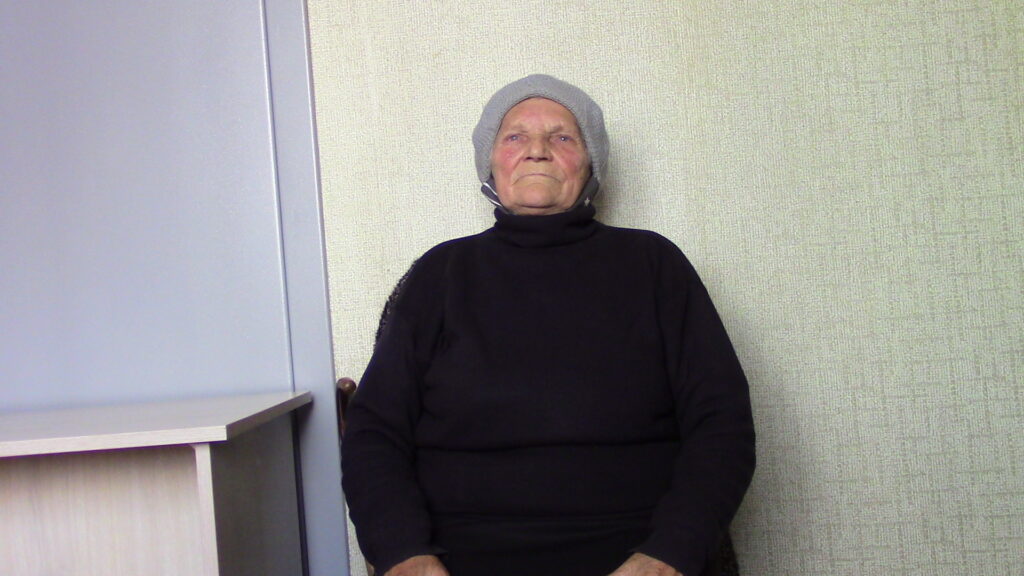
The respondents recreate a microlevel of individual perceptions of the past. They have limited understanding of the military and political context of World War II, or the exact names of German formations (although they have less trouble designating the UPA and the Schutzmannschaft—the Volhynian auxiliary police, which drew its members from various ethnic groups but was comprised mainly of ethnic Ukrainians throughout the war).13 When discussing uniformed police officials, they did not know personally, they sometimes erroneously identify these as Germans. Such mistakes are easy to expose by asking respondents which language these “Germans” spoke (if the answer is Polish or Ukrainian, they were most likely not Germans but members of the multi-ethnic Schutzmannschaft). “Soltes and a German also searched our house, and the German opened the cellar hatch. He [the German – P.D.] stooped over and he stared, stared, he stared and he saw the Jewish woman, because there was no place for her to hide in there. He saw her just fine. Then he said in Polish: ‘Nema nič’,” recounted Halyna Bereza from the village of Korshiv, Volyn Oblast.14
The recorded interviews are currently being processed and catalogized, so they are not available for researchers yet. The author of this publication received access owing to the fact that he served as regional coordinator for the Voices project in the Rivne and Volyn Oblasts in 2021. Due to this reason, most references to sources do not contain specific catalogue signatures. I will only mention the names of the respondents, their birth dates and places, their place of residence, and the date the interview was recorded. This information will make it possible to track down these testimonies.
Since these materials may interest a broader circle of researchers of social history, I will briefly outline the main issues featured in the accounts: Volhynia in the interwar period, the Soviet regime in Volhynia in 1939-1941, life under the Nazi occupation (the fate of Soviet POWs, the burning of villages, survival strategies during the war and the occupation, forced labor in the Reich; UPA activity, Soviet partisan activity, functional collaboration, the murder of people with psychiatric disorders; the image of the Other/stranger/enemy during the war. temporal and spatial perceptions of the war, the Holocaust), postwar life, present-day perceptions of the war and the trauma of wartime violence. In what follows, I will focus on several key issues that invite more thorough research and a reconsideration of certain questions concerning the Holocaust and World War II.
“But the Jew’s sly”: interethnic relations and the image of the Other in accounts of Ukrainians about the interwar period
Historians researching the Holocaust in Ukraine on a microlevel often take in account the background of interethnic relations that took shape during the interwar period. Some historians have applied a long durée approach and dug even deeper—back to the period of pogroms during the Ukrainian national-democratic revolution of 1917-1921 (e. g. Jeffrey Veidlinger15), or even to the 19th century (cf. Omer Bartov’s monography Anatomy of a Genocide). Against this backdrop, the testimonies by Ukrainians about the interwar period acquire special value. They reveal diverse experiences of interethnic relations. Most of the stereotype assessments of the Other in the respondents’ accounts pertain to Poles and Jews—the two most populous ethnic groups living in close proximity to Ukrainians.
Assessments of the role of Poles are often informed by the ethnic and economic politics of the Second Polish Republic. “From hearsay I know the Poles repressed our people. Even buying decent land was the prerogative of those Polish soldiers,” recalls Dmytro Kyidiuk from the village of Bychal’, Rivne Oblast.16
The accounts contain manifold stereotypes about Jews (mainly of religious and social-economic nature). The religious dimension of stereotypes becomes apparent in retrospective assessments by respondents of the reasons why the Holocaust happened. “What they were killed for, as if I can tell you, kids. I don’t know. People said it was the Jews’ own doing. That they had crucified Jesus, that they got punished for that. This is how the Lord punished them. I know that’s what people used to say, even though I was little back then,” recounts Khrystyna Shnyt from village of Horodyshche, Volyn Oblast.17 “Well, given how they slayed Jesus Christ… It’s no shame about them,” says Ievheniia Iakymchuk from the village of Lypky, Rivne Oblast.18
Yet these kinds of religious preconceptions are highly rare. Negative assessments of the economic role of Jews predominate. “There was a Jew named Husher in our village, who owned a shop. He would buy cereals in the autumn (when they were cheaper) and store them, only to sell them in the spring when they got more expensive—that’s how he got rich,” recounts Dmytro Kyidok.19 Generally speaking, the idea that “sly Jews” were getting rich off of Ukrainian villagers by means of deception is a very popular stereotype, which emerges in the witness accounts rather often. “As soon as the Germans arrived, they gathered them in the ghetto. I know my mother brought them milk, she had Jewish acquaintances, everyone used to have those. There was no industry back then, only business with Jews. But the Jew’s sly,” tells Arkadii Dmytruk from the village of Zhydychyn, Volyn Oblast.20 This stereotype arose from the engrained ethnocultural division of labor in Volhynia, by which many Jews were active in trade, whereas Ukrainian villagers worked the land. Agricultural communities often saw trading as something “unprofitable” and the domain of deceit and manipulation.
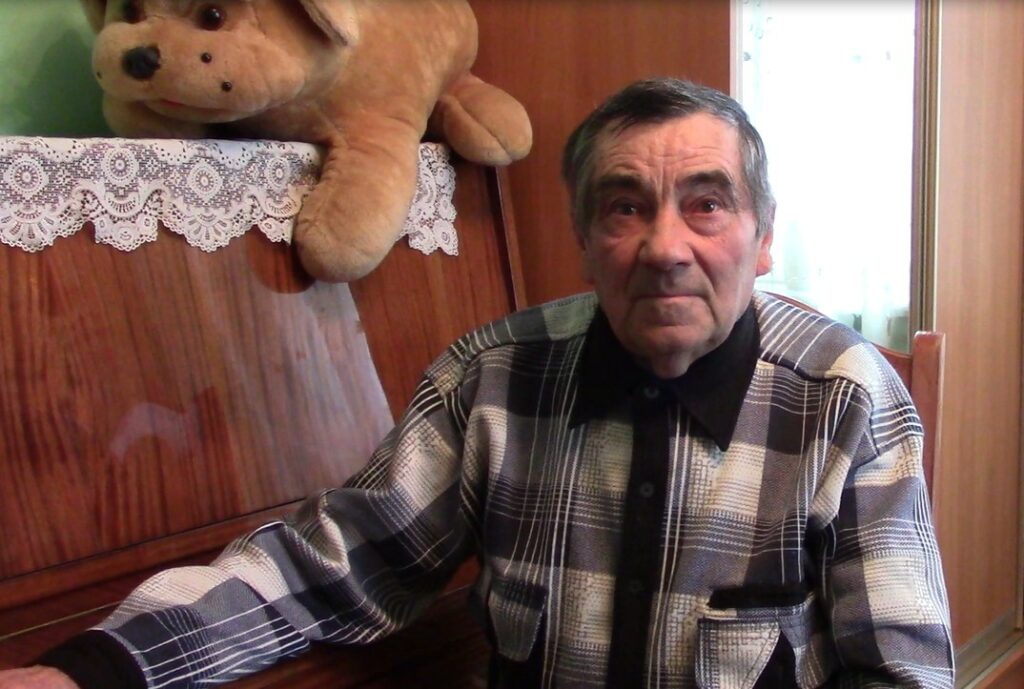
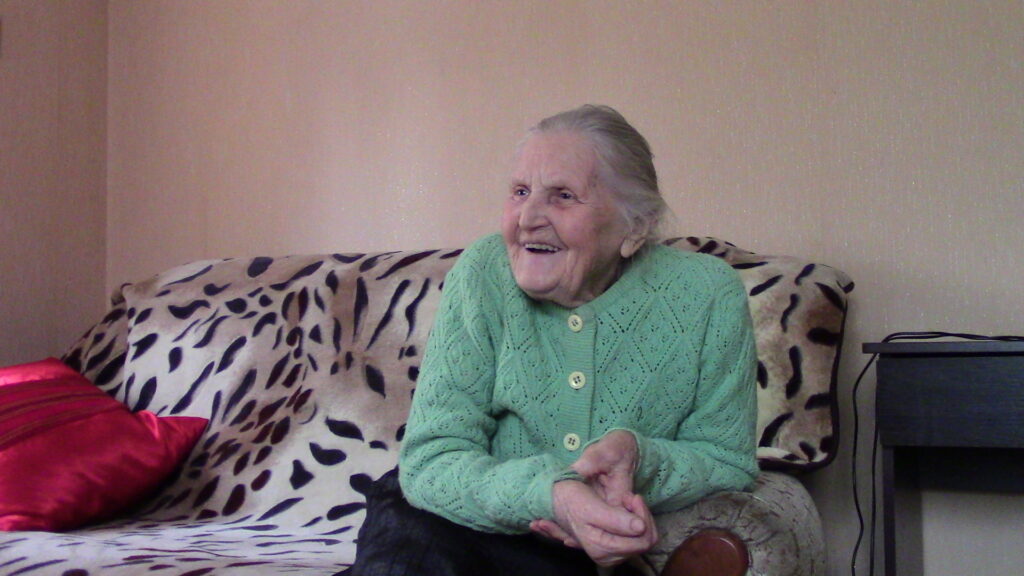
The majority of respondents indicate that the prewar interethnic relations were not characterized by much conflict. Ukrainians often socialized and worked together with Poles and Jews, with the former they even concluded marriages. “There were Poles and Ukrainians in our village. Mom’s sister got married to a Pole. My cousins still live over there. My father’s sisters also married Poles. Before the war began, there was no [interethnic] difference,” recalls Hanna Kukharchuk from the village of Kniahyninok.21 Antonina Huk from the village of Zelenyi Dub recounts the following about her experience of interaction with Jews: “Jews would come up to our house. Mom wanted to give them beans, but he said: ‘we don’t eat beans.’ That’s what that Jew said. Why he came to us, I don’t know, maybe he needed something. They were people like you and me…”22 Stereotype conceptions about the Other are part of the sociocultural space of any community. Under normal circumstances, they do not usually have a substantial impact on interethnic relations. Such stereotypes make themselves felt the most in extreme conditions.
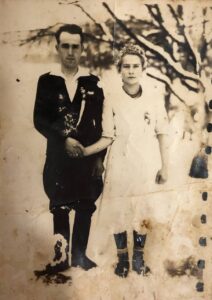
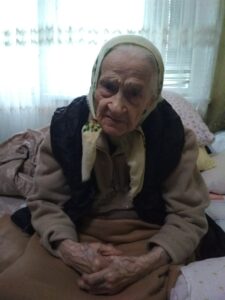
“Even among the Soviets were decent people”: the experience of the Soviet occupation and the Holocaust
Most respondents refer to their first confrontation with Soviet totalitarianism as the period of the “first Soviets”. Scholars who have closely studied accounts of Holocaust victims from the VHA archive will know that testimonies of Jews about this period reflect multiple perspectives. Many Jews who were from well-to-do families or active in Zionist organizations recall being repressed and harassed. Other Jews, who did not have close ties to Zionism and were not considered rich by the standards of the Soviet regime, could benefit from the policy of ethnic equalization implemented by the Soviets (or rather of the remnants of this policy, because by the late-1930s, it was rapidly being rolled back).23 Even among those Jews for whom the establishment of Soviet rule over Volhynia entailed material losses and harassment, many consider these events in the light of the Nazi occupation that followed. They concede that it was possible to adapt to Soviet rule (in contrast to the Nazi occupation, which denied Jews the very right to live).
Ukrainian historiography has long assumed that Ukrainian experiences of the period of the “first Soviets” were more unequivocal—the overall majority of the population suffered repression and deprivation. Especially this last factor is often said to have had a substantial impact on the attitudes of Ukrainian neighbors vis-à-vis Jews during the Holocaust (part of the Ukrainians perceived the Soviet authorities as “Jewish”, due to the popularity of the Nazi concept of “Judeo-Bolshevism”). Yet the testimonies recorded within the framework of Voices demonstrate a more complex spectrum of views. Indeed, part of the Ukrainians who were branded rich farmers or who demonstrated an active nationalist outlook were subjected to repression and persecution. For example, Mariia Botanievych, a resident of the city of Ostrih, recalls the arrival of Soviet power as follows:
“Back when I was in school, there were no differences between us, no divisions. After the arrival of Soviet rule, we saw what suffering meant… The Soviets arrived on 17 September, and we rushed to see them coming, because we didn’t have a clue what was going on. But hardly had they arrived when they started seizing people. My uncle was the director of the Ukrainian gymnasium in Rivne. He was shot two days later. How can one bear such a thing? The Soviets arrived and immediately shot him.”24
But a little further, Botanievych, recounting her later personal experience of interaction with the NKVD in 1944-1945, makes contradictory remarks: “One time Soviet officers brought in a girl who served as a liaison for the Banderites, and they told me quietly to tell her not to admit to anything, even if they would force needles between her nails. Because if she admitted, they wouldn’t release her, and if she didn’t, they would let her go after a month. Even among the Soviets were decent people. The Soviet authorities never persecuted me, during the crisis [of the immediate postwar years] they helped me buy a flat.”25 This ambivalence or even contradiction in assessments of the Soviet period is no exception. Many respondents indicate that with the onset of Soviet rule, their living conditions actually improved. Take the statement of Lidiia Leshchuk from the village of Perevediv:
“There was no bloodshed, they just came and took over. My parents weren’t afraid, our dad had never meddled with someone else’s business, he just took care of his own family and didn’t do any harm. In 1939, some 10 or 11 kolkhozes were created. Poor folk joined the kolkhoz by themselves. My dad did so too. They paid him 9 kilograms of grain for a workday. He would earn some 40 meters (appr. 4 tons) of grain [a month].”26
Such a perspective on the period of the “first Soviets” is far from unique. Many respondents indicate that the establishment of the Soviet regime helped them improve their living conditions. For this reason, the question of how Soviet repression and German propaganda about “Judeo-Bolshevism” affected the attitudes of Ukrainians towards Holocaust victims during the Nazi occupation calls for more thorough research in the dimension of social history. It is evident that indignation about Soviet rule may not have assumed such proportions as previously thought (and, therefore, cannot have weighed on their attitudes towards Jews as much). Even the information about mass shootings of captives in Soviet prisons, conducted by NKVD officers on the eve of the German arrival (which many historians view as a factor provoking pogroms against Jews), did not at all always engrain itself in the memory of the respondents:
Interviewer: “When the Soviets retreated, they shot a lot of prisoners in the Torchyn prison, do you know anything about these prisoners?
MV: (Protracted silence) Seems I did not hear anything about that.”27
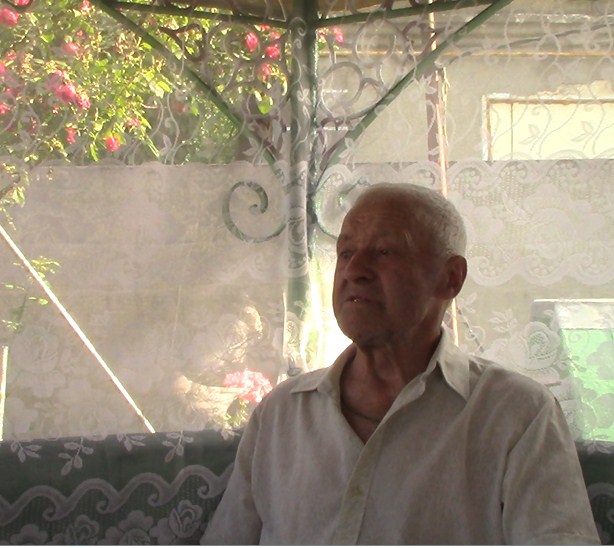
“I’d never met such good people”: the German occupation and violence committed by “svoï”
“Mama used to say: ‘I’d never met such good people.’ One of those German soldiers had a little child of his own back home. So he, she would say, ‘couldn’t let go of you’. They shared everything with us—sugar, whatever they were carrying. They had no grievances against us at all” (from the recollections of Motria Dombrovs’ka about the German occupation, village of Zhydychyn, Volyn Oblast).28
This account of the experience of interaction with German soldiers during World War II is far from unique. For researchers of the Holocaust in Ukraine working with Jewish testimonies, this is a familiar issue. Part of the Jewish respondents refer to “good” Germans, who shared chocolate with them and behaved friendly. Meanwhile, they associate the experience of violence with their Ukrainian neighbors who served in the Schutzmannschaft or other bodies of local self-rule. Given that the ratio between German occupiers and auxiliary policemen was 1:10 to 1:20, these kinds of accounts make sense. As noted by Timothy Snyder, “the face of German power in the Volhynian countryside was Ukrainian.”29
Many of the Ukrainian respondents we recorded also tended to characterize the Germans as “good” people who behaved decently. “[T]he Germans treated us well, they would give us children gingerbread, candy. But there were hardly any Germans in our village, only Ukrainians,”30 recounts Lidiia Leshchuk from the village of Pereverediv, Rivne Oblast. The claim about there being “hardly any Germans” turns up again and again in the testimonies of residents who lived in small villages and who, during the occupation, mostly interacted with “their own” collaborators.
Oleksandr Tsymbaliuk from the village of Pereverediv (Rivne Oblast) mentioned: “My father got married during the war, in 1942, the wedding took place at home, it was a modest affair. Two Germans arrived on horses—everyone got scared, remained seated. The Germans went inside the house, said something in their own tongue, then they noticed the newlyweds sitting and said: ‘gut, gut’. People offered them a drink, they finished it, turned around and left. Without saying a word… When they burned down Malyn, my aunt was set free by a German… If it had been our politsai,31 she told me, he wouldn’t have let her go”.32 In his paper “Contesting the Malyn Massacre”, an American historian Jared McBride also referred to cases of local auxiliary police participation (ethnic Ukrainians as well as Poles) in the process of Malyn destruction.33
Thus, Ukrainians serving in the collaborative structures appear as hangmen not just in Jewish testimonies, but in their Ukrainian counterparts, too. The source material presented here calls on researchers to delve deeper into the phenomenon of violence against “svoï” and its role in the context of the Holocaust.
In recollections about the events after the Soviet return in early 1944, the violence by “svoï” is increasingly associated with UPA activity. “Only banderites shot and harassed the population. The Germans didn’t shoot anyone around here,” recounts Halyna Tuhaibeieva from the village of Holyshiv, Volyn Oblast.34 Of course, we have to take into account the fact that many testimonies were strongly influenced by Soviet anti-nationalist propaganda. Probably because of this, many of them significantly exaggerate the role of OUN and UPA representatives in the violence. Often the respondents point out the significant part played by the UPA in the realization of the Holocaust, in some cases even exaggerating it:
“I merely saw the Germans drive by on their big motorcycles and with their guns. We ran up the hill to see them drive from Peremorivka to Andrushivka, and from there to Shumsk. So I saw them from afar, but not from up close. They never showed up in our village… Then Ukraine did all those things, Ukrainians abused them, the Jews, the Poles, they killed everyone from Ukraine. They wanted to have a pure Ukraine. Now it is pure, now they’re gone” (from the testimony of Antonina Huk, village of Zelenyi Dub, Rivne Oblast).35 The same respondent also points out the UPA forcibly mobilized fighters from among the village men—yet another dimension of violence against “svoï” requiring separate research.
A similar hyperbolization of the significance of UPA fighters or the Schutzmannschaft during the Holocaust is inherent to Jewish recollections. The respondents did not pose enough information to construct their narratives with due regard for the broader context. Since most of their interactions were with people who represented the Nazi occupational regime at the local level (the Schutzmannschaft) or who hunted down groups of Jews who had survived the large waves of mass shootings (the UPA), the witnesses connect the source of this violence to its executors. In their eyes, the German organizers remain rather vague, in the background. In any case, the serious fear of repercussions by “svoï” collaborators or by UPA fighters was likely far from the last factor deterring many Ukrainians from helping Jews.
In rural areas, it was Schutzmannschaft members, rather than Germans, who decided the fate of Jews and the people hiding them. Halyna Bereza from the village of Horodok, Volyn Oblast, recounts that a Jewish family was exposed to be hiding in her family’s house. Those Jews, whom the police was able to capture, were shot. But the respondent does not mention any repressive measures vis-à-vis her family, which should have been carried out according to the occupational legislation.36 It is a well-known fact that people in Nazi-occupied Ukraine could be shot for hiding Jews. In reality, the implementation of this instruction depended on the attitudes of the policemen involved. None of Halyna Bereza’s relatives were shot or even arrested. Similar stories appear in several other accounts—exposed Jews got shot, while their non-Jewish rescuers were left unharmed. However, the death penalty was indeed periodically applied, maintaining a significant atmosphere of fear among the local population.
Volodymyr Danyliuk from the village of Zolochivka, Rivne Oblast, also stresses that the only authorities his family had to deal with when they were hiding Jews were Schutzmannschaft members: “A politsai came riding up to our house and asked: ‘Got any Jews here?’ So dad says: ‘What Jews, where am I supposed to get Jews from?’ So he says: ‘Give it a good thought.’ So dad says: ‘What thought, there’s no Jews around here.’ So he says: ‘Well alright, you got some breakfast for me then?’ And dad says: ‘I’ll tell my wife.’ Mom made him some eggs and bacon, he ate his meal, walked out and said: ‘Alas, if there’d be a Jew around to kill, it’d be even better.’ And he mounted his horse and left. That’s the last time I saw any authorities, Germans or whoever.”37
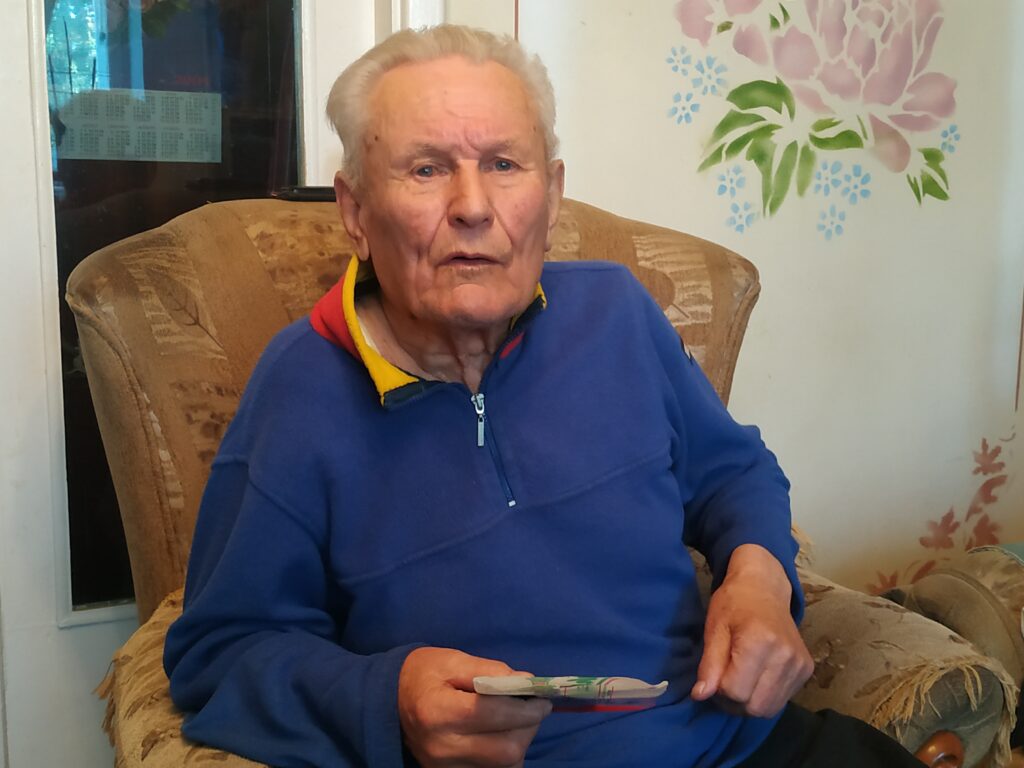
“Now the Poles would attack the Ukrainians, then the Ukrainians the Poles”: The 1943 ethnic cleansings in Volhynia and the fate of the Jews
Another issue that comes up in almost all recollections by Ukrainian witnesses are the ethnic cleansings during the Ukrainian-Polish conflict in Volhynia in 1943. Most accounts represent this conflict as a case of mutual mass murdering of civil inhabitants. The respondents recall no combat or confrontations between armed units, but rather the burning down of Polish and Ukrainian villages and the murder of civilians. “There were conflicts during the war: now the Poles would attack the Ukrainians, then the Ukrainians the Poles. It turned into a struggle between both peoples. People got killed, villages were burned to the ground, sometimes the Poles got burned down, sometimes it was the Poles burning down, it was a bad situation,” recounts Maksym Vintsiuk from the village of Kul’chyn, Volyn Oblast.38 Many respondents point to UPA members as direct participants and at times even initiators of these acts of violence. At the same time, since this is the Ukrainian perspective on these cleansing, a large number of witnesses mention Polish violence against Ukrainians.
A leitmotif in these recollections about the Ukrainian-Polish confrontation is the plight of the Jews, who literally found themselves caught in-between the cross-fire. It has been shown that Holocaust victims hiding in Polish villages attacked by the UPA were likely to perish together with their rescuers (or lose these helpers). In the recollections by Ukrainian villagers who suffered from acts of retaliation, something similar becomes apparent:
Interviewer: “Please tell us about the Jews hiding with your family.”
V.D.: “While they were with us and hiding in the cellar, our village was burned down by Poles. We quickly went into the woods, but the Jews were still in the cellar. The cellar could be accessed from our outhouse. It was harvest time, before the reaping started, but the rye stood tall when they were there, so they must have come in the spring. Dad did not come to the woods with us to hide, he hid himself in the rye to save the Jews. If the house caught fire, they would suffocate in there. […] When I recall these things, I feel terrible. Can you imagine, the Poles came and burned down our house, both houses, everything ablaze, and dad set the Jews free and took them to the rye, there he made them lie down.39
The fate of the Jews during the mutual Ukrainian-Polish ethnic cleansing requires more detailed research. Most likely these conflicts substantially decreased Jews’ survival chances. They were bereft of their Polish and Ukrainian rescuers, both due to direct attacks on villages and, perhaps, also due to a general atmosphere of fear and mistrust reigning in Volhynia in those days.
“I heard nothing about Jews getting killed”: the fragmentary nature of recollections of the Holocaust
As discussed at the beginning of this article, many researchers have pointed out the frequent omission of the Holocaust in the testimonies of Ukrainian witnesses. The oral history projects of Yahad-In Unum and the Babyn Yar Holocaust Memorial Center (Voices) demonstrate that this issue is in fact somewhat more complex than simply omission. Of course, there is a big difference between the artificially created postwar narratives about the Second World War in those environments that did not want to remember the Holocaust and the memories of ordinary inhabitants. The latter lived behind the iron curtain for more than 50 years and could not get into the focus of interview-based research projects. The majority of respondents in the Voices projects do remember the Holocaust. However, compared to the testimonies of Jews recorded in the framework of the VHA and other oral history projects, their responses appear rather fragmentary.
Without a doubt, some of the witnesses may indeed omit the Holocaust because of their direct or indirect involvement in these events and feelings of guilt. “People said the Germans killed nearly all Jews. Most people kept quiet about this in the village because they were scared. Everyone had to do with it, through their family or some other way. And no one could say this. I was a little child, I heard the grownups say they had been deported (he was deported, she was deported, and so on). I would often ask questions, and the answer was always the same: ‘We don’t know anything, we didn’t say anything like that,”40 notes Oleksandr Hrazdil’ from the village of Kul’chyn, Volyn Oblast, very lucidly. This involvement in the Holocaust could have all kinds of dimensions, which did not necessarily pertain to murder per se (although that could also be the case). The range of these dimensions of “culpability” has been described aptly by Father Patrick Desbois:
“Some people had to mix unquenched lime with the blood of Jews; some had to bind together the clothes of undressed Jews into knots and then load these onto carts; some had to fix these clothes; some had to feed the hangmen during the shootings; some had to bring carts loaded with hemp or sunflower seeds to burn the corpses; some had to cover the corpses with these seeds; some had to pull gold teeth from the mouths of Jews…”41
These forms of petty involvement or material benefit were widespread. “When the Germans beat them up, we didn’t have a house, or timber, then me and my dad demolished Jewish houses for timber and built our own house. We scraped off the planks and tin-plates, and built ourselves a house,” recounts Mykola Bosyi from Zuravnyky, Volyn Oblast.42 For many respondents such behavior might have provoked feelings of guilt or shame, and reluctance to speak about the Holocaust.
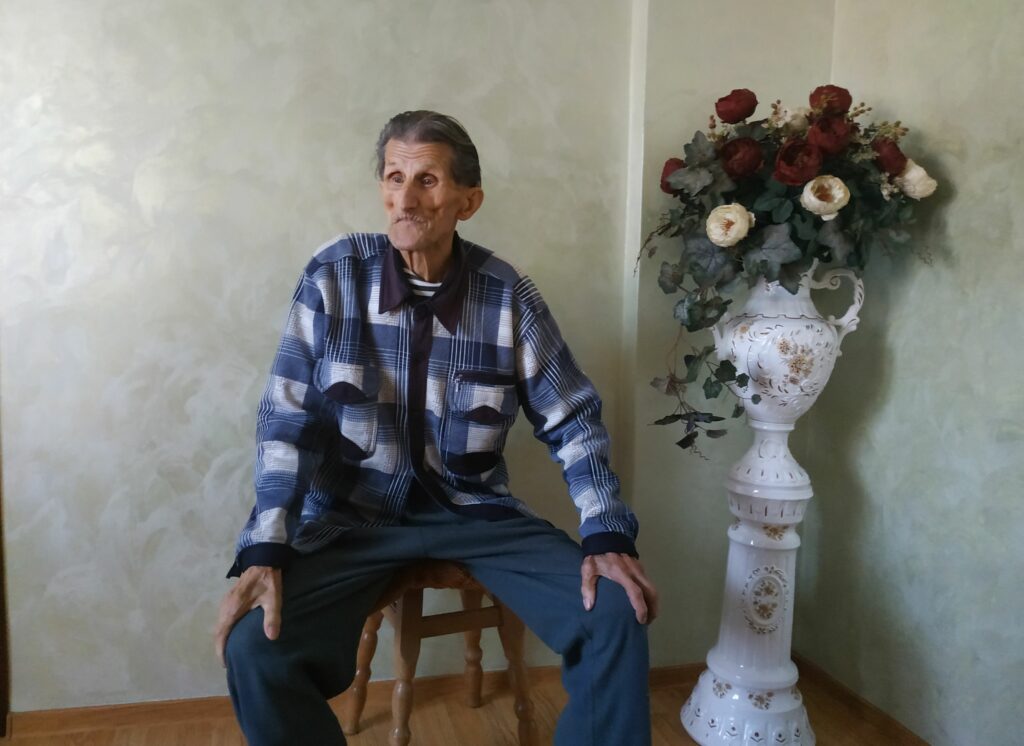
However, I believe that in many cases, the omission is not intentional but rather results from the fragmentary nature of memories. There can be more complex reasons than reluctance to talk. One of these is “egocentrism of pain”. The suffering of “svoï” always feels more intense and is better remembered. Take for example Ielyzaveta Pisniuk’s response to questions about the murder of Jews in Lutsk: “I heard nothing about Jews getting killed. I only know that our Ukrainians were shot in the prison, we even went there.”43
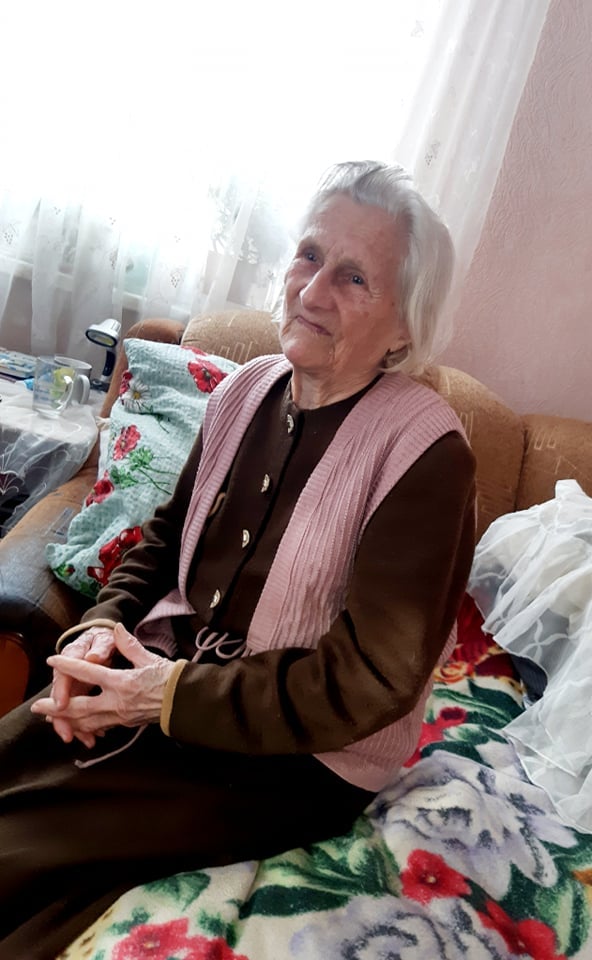
When asked about the Holocaust, a significant number of Ukrainian respondents give a mantra-like answer in the spirit of: “There were no Jews in our village.” While talking to them, one senses that they either have no recollections about interaction with Jews at all, or these recollections are so episodical that they cannot be reproduced. This idiosyncrasy of remembering does not necessarily point in the direction of intentional omission. There are two possible explanations in these cases: either the young age of the respondents during World War II (if there were no Jews living nearby or in their settlement, the grownups would do business with them further away from the house, without telling their children much about this); or the episodical nature of communication in rural communities, whose horizons often did not reach beyond one’s own village and its direct surroundings. If these villages were inhabited by no or only a few Jews, the heads of household would usually do business with them in nearby towns. Likely the heads of these patriarchal families shared little information about these dealings with their children. Interaction with Jews was something too distant to frequently discuss it at home.
A final plausible explanation for the fragmentary nature of the testimonies by Ukrainians about the Holocaust is the way we assess these recollections. When listening to Ukrainian accounts about World War II, one should not compare them with the Holocaust survivors testimonies. It is self-evident that these recollections appear fragmentary and incomplete as accounts of the Holocaust. One can also put it the other way around: wouldn’t historians writing a social history about Ukrainians using Jewish testimonies feel a similar sense of fragmentariness? Perhaps, memory about “svoï” by definition appears to be a more structured and consistent narrative, since it pertains to people themselves.
Of course, all these hypotheses need to be verified by further research—for now, these are just personal suppositions of the author of this publication.
Conclusion
Thus, current historiographical trends in Holocaust studies invite the creation of a new kind of source—testimonies by Ukrainian civilians about the catastrophe and related aspects, which make it possible to scrutinize the social dynamics of violence during World War II. The Voices project, in whose framework 164 testimonies of residents of the historical-cultural region of Volhynia were recorded in the years 2020-2021, is an attempt at creating such a source base. A cursory analysis of testimonies in question shows that a number of conclusions about the cause and nature of ethnic violence in Volhynia during the war have to be further elaborated and reconsidered with the help of microhistorical case studies. For instance, what was the impact of Soviet, nationalist and Nazi propaganda among the low-literate majority of the Ukrainian population of the region? What is the relation between the Soviet repression and the increase of antisemitic attitudes among the local population? How did violence withing ethnic communities affect the willingness of Ukrainians to help Jews during the Holocaust? How did the Ukrainian-Polish mutual ethnic cleansing affect the survival chances of Holocaust victims? Why do many testimonies by Ukrainians about the Holocaust have a fragmentary nature?
It is my sincere hope that this new body of oral history sources will help researchers look for answers to these and other important questions. For now, we are waiting for the testimonies of the Voices project to become publicly available, at least for professional researchers.
Translated from the Ukrainian by Tobias Wals
- Jan T. Gross, Neighbors: The Destruction of the Jewish Community in Jedwabne, Poland (Princeton: Princeton University Press, 2022), pp. 304. ↩
- Omer Bartov, Eastern Europe as a Site of Genocide, Contemporary Issues in Historical Perspective. The Journal of Modern History, 80, September 2008 (Chicago: University of Chicago, 2008), pp. 557–593; Omer Bartov, Communal Genocide. Personal Accounts of the Destruction of Buczacz, Eastern Galicia, 1941–1944, Shatterzone of Empires. Coexistence and Violence in the German, Habsburg, Russian, and Ottoman Borderlands (Bloomington and Indianapolis: Indiana University Press, 2013), pp. 399–420. ↩
- Jan Grabowski, Rescue for money. Paid helpers in Poland, 1939–1945 (Yad Vashem; Jerusalem: Search and Research, 2008), pp. 54; Jan Grabowski, Hunt for the Jews. Betrayal and Murder in German-Occupied Poland (Bloomington: Indiana University Press, 2013), pp. 304; Jan Grabowski, Na posterunku: Udział polskiej policji granatowej i kryminalnej w zagładzie Żydów (Wołowiec: Wydawnictwo zarne, 2020), 432 s. ↩
- Tim Cole, Traces of the Holocaust. Journeying in and out of the Ghettos (London; New York: Continuum, 2011), pp. 192; Tim Cole, Holocaust Landscapes (London; Oxford; New York; New Delhi; Sydney: Bloomsbury, 2016), pp. 272. ↩
- Omer Bartov, Anatomy of a Genocide: The Life and Death of a Town Called Buczacz (New York, London, Toronto, Sydney, New Delhi: Simon Schuster, 2018), pp. 397. ↩
- Jared Graham McBride, “A Sea of Blood and Tears”: Ethnic Diversity and Mass Violence in Nazi-Occupied Volhynia, Ukraine, 1941–1944, A dissertation submitted in partial satisfaction of the requirements for the degree Doctor of Philosophy in History (Los Angeles: University of California, 2014), pp. 542. ↩
- Jeffrey Veidlinger, In the Midst of Civilized Europe. The Pogroms of 1918–1921 and the Onset of the Holocaust (New York: Metropolitan Books; Henry Hold and Company, 2021), pp. 468. ↩
- Raz Segal, Genocide in the Carpathians War, Social Breakdown, and Mass Violence, 1914–1945 (Stanford: Stanford University Press, 2016), pp. 232. ↩
- Shmuel Spector, The Holocaust of Volhynian Jews, 1941–1944 (Jerusalem: Yad Vashem, Federation of Volhynian Jews, 1990), pp. 383 (p. 2–3). ↩
- John-Paul Himka, Ukrainian Nationalists and the Holocaust. OUN and UPA’s Participation in the Destruction of Ukrainian Jewry, 1941–1944 (Stuttgart: Ibidem-Verlag, 2021), pp. 508 (p. 96). ↩
- Father Patrick Desbois, Khranytel’ spohadiv. Kryvavamy slidamy Holokostu (Kyiv: Dukh I Litera, 2011), pp. 336 (p. 121). ↩
- Testimony of Halyna Vasylivna Tuhaibaieva. Date and place of recording: 19 April 2021, Kivertsi, Volyn Oblast. Ethnicity: Ukrainian of Polish-Belarusian descent. Date and place of birth: 1937, Holyshiv, Volyn Oblast. Video recording. Babyn Yar Holocaust Memorial Center (BYHMC). ↩
- Jared Graham McBride, “A Sea of Blood and Tears”: Ethnic Diversity and Mass Violence in Nazi-Occupied Volhynia, Ukraine, 1941–1944,” (Los Angeles: University of California, 2014), pp. 542. (p. 198). According to Mc-Bride’s estimations, even after many of them left the Schutzmannschaft (in 1943) and took to the woods, taking their guns with them, to create to UPA, ethnic Ukrainians continued to constitute the majority in the ranks of the auxiliary police in Volhynia, despite a substantial increase in the number of Poles. ↩
- Testimony of Halyna Serhiïvna Bereza. Date and place of recording: 20 August 2021, Korshiv, Volyn Oblast. Ethnicity: Ukrainian. Date and place of birth: 1939, Horodok, Volyn Oblast. Video recording. BYHMC. ↩
- Jeffrey Veidlinger, In the Midst of Civilized Europe. The Pogroms of 1918–1921 and the Onset of the Holocaust (New York: Metropolitan Books; Henry Hold and Company, 2021), pp. 468. ↩
- Testimony of Dmytro Hryhorovych Kyidiuk. Date and place of recording: 7 March 2021, Bychal’, Rivne Oblast. Ethnicity: Ukrainian. Date and place of birth: Bychal’, Rivne Oblast, exact date of birth unknown, approximately born in the early-1930s. Video recording. BYHMC. ↩
- Testimony of Khrystyna Artemivna Shnyt. Date and place of recording: 29 November 2020, Horodyshche, Volyn Oblast. Ethnicity: Ukrainian. Date and place of birth: 1930, Horodyshche, Volyn Oblast. Transcription of video recording. BYHMC. ↩
- Testimony of Ievheniia Hryhorivna Iakymchuk. Date and place of recording: 31 July 2020, Lypky, Rivne Oblast. Ethnicity: Ukrainian. Date and place of birth: 1925, Lypky, Rivne Oblast. Transcription of video recording. BYHMC. ↩
- Testimony of Dmytro Kyidiuk. BYHMC. ↩
- Testimony of Arkadii Hryhorovych Dmytruk. Date and place of recording: 18 April 2021, Zhydychyn, Volyn Oblast. Ethnicity: Ukrainian. Date and place of birth: 3 October 1931, Zhydychyn, Volyn Oblast. Audio recording. BYHMC. ↩
- Testimony of Hanna Ivanivna Kukharchuk. Date and place of recording: 28 March 2021, Kniahyninok, Volyn Oblast. Ethnicity: Ukrainian, displaced (deported from the territory of today’s Poland in 1944-1946). Date and place of birth: 1936, Pieszowola, Włodawa Powiat, Lublin Voivodeship. Video recording. BYHMC. ↩
- Testimony of Antonina Matviïvna Huk. Date and place of recording: 4 March 2021, Rivne, Rivne Oblast. Ethnicity: Ukrainian. Date and place of birth: 1 December 1931, Zelenyi Dub, Rivne Oblast. Audio recording. BYHMC. ↩
- See Terry Martin, The Affirmative Action Empire: Nations and Nationalism in the USSR, 1923–1939 (Ithaca: Cornell University Press, 2001), pp. 528. ↩
- Testimony of Mariia Pavlivna Botanievych. Date and place of recording: 10 April 2021, Ostroh, Rivne Oblast. Ethnicity: Ukrainian. Date and place of birth: 1924, Horanka, Ternopil Oblast. Lived in the village of Liudvypol’, Rivne Oblast, during the war. Video recording. BYHMC. ↩
- Testimony of Mariia Botanievych. BYHMC. ↩
- Testimony of Lidiia Ivanivna Leshchuk. Date and place of recording: 18 June 2021, Pereverediv, Rivne Oblast. Ethnicity: Ukrainian. Date and place of birth: 1925, Pereverediv, Rivne Oblast. Video recording. BYHMC. ↩
- Testimony of V’iacheslav Hryhorovych Mozoliuk. Date and place of recording: 6 July 2021, Lypliany, Volyn Oblast. Ethnicity: Ukrainian. Date and place of birth: 1935, Voiutyn, Volyn Oblast. Video recording. BYHMC. ↩
- Testimony of Motria Artemivna Dombrovs’ka. Date and place of recording: 27 July 2021, Zhydychyn, Volyn Oblast. Ethnicity: Ukrainian. Date and place of birth: 1944, Vichyni, Volyn Oblast. Audio recording. BYHMC. ↩
- Michael Diment, Samotnii vyhnanets’. Shchodennyk pro Svyniukhy ta hetto v Lokachakh (Kyiv: Ukrainian Center for Holocaust Studies, 2016, pp. 200 (p. 9). ↩
- Testimony of Lidiia Leshchuk. BYHMC. ↩
- In German-occupied Ukraine, local members of the auxiliary police were colloquially called politsaï (singular: politsai), derived from the German word Polizei. Since the term cannot be translated by one single word, the translator has decided to render it literally in the translated citations from testimonies (note by the translator). ↩
- Testimony of Oleksandr Mykolaiovych Tsymbaliuk. Date and place of recording: 24 April 2021, Lychany, Volyn Oblast. Ethnicity: Ukrainian. Date and place of birth: 1953, Lychany, Volyn Oblast. Video recording. BYHMC. ↩
- Jared McBride, Contesting the Malyn Massacre: The Legacy of Inter-Ethnic Violence and the Second World War in Eastern Europe, The Carl Beck Papers, Number 2405, 2016, pp. 78. ↩
- Testimony of Halyna Tuhaibaieva. BYHMC. ↩
- Testimony of Antonina Huk. BYHMC. ↩
- Testimony of Halyna Bereza. BYHMC. ↩
- Testimony of Volodymyr Fedorovych Danyliuk. Date and place of recording: 7 September 2021, Lutsk, Volyn Oblast. Ethnicity: Ukrainian. Date and place of birth: 1 May 1933, Zolochivka, Rivne Olast. Video recording. BYHMC. ↩
- Testimony of Maksym Tarasovych Vintsiuk. Date and place of recording: 20 May 2021, Kul’chyn, Volyn Oblast. Ethnicity: Ukrainian. Date and place of birth: 1932, Kul’chyn, Volyn Oblast. Audio recording. BYHMC. ↩
- Testimony of Volodymyr Danyliuk. BYHMC. ↩
- Testimony of Oleksandr Iosypovych Hrazdil’. Date and place of recording: 11 April 2021, Kul’chyn, Volyn Oblast. Ethnicity: Ukrainian Czech. Date and place of birth: 1942, Ol’hanivka (today: Kul’chyn), Volyn Oblast. Video recording. BYHMC. ↩
- Father Patrick Desbois, Khranytel’ spohadiv. Kryvavymy slidamy Holokostu (Kyiv: Dukh I Litera, 2011), pp. 336 (p. 121). ↩
- Testimony of Mykola Stepanovych Bosyi. Date and place of recording: 28 September 2021, Zhuravnyky, Volyn Oblast. Ethnicity: Ukrainian. Date and place of birth: 8 July 1933, Zhuravnyky, Volyn Oblast. Video recording. BYHMC. ↩
- Testimony of Ielyzaveta Myronivka Pisniuk. Date and place of recording: 24 July 2021, Zhydychyn, Volyn Oblast. Ethnicity: Ukrainian. Date and place of birth: 19 January 1931, Zhydychyn, Volyn Oblast. Audio recording. BYHMC. ↩
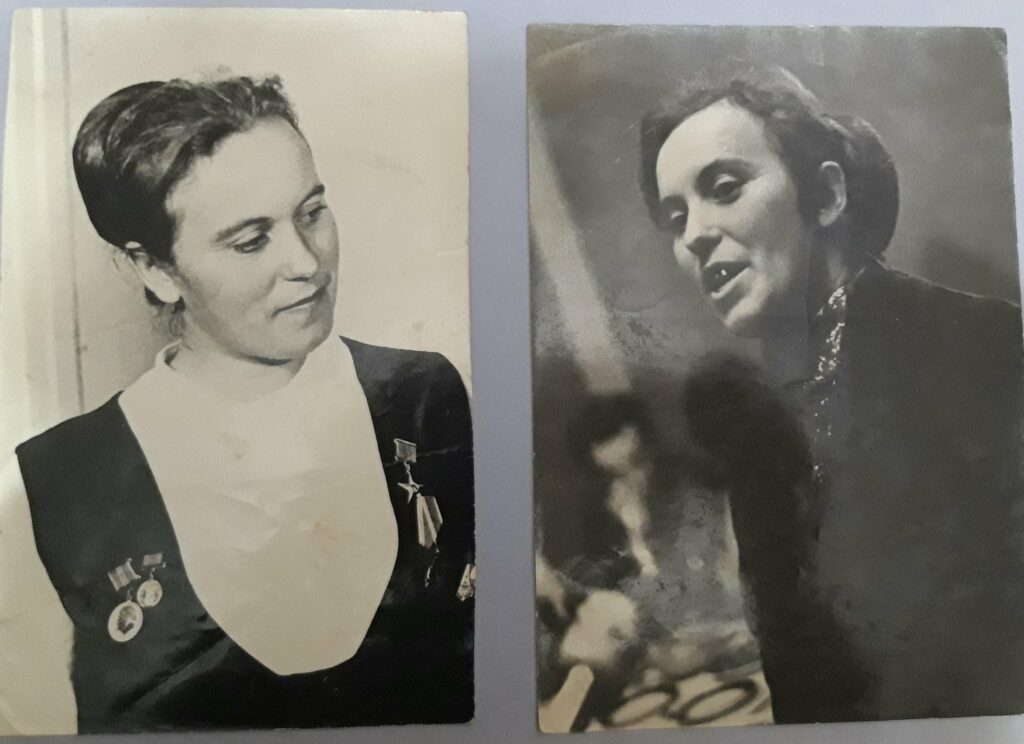
Judy Cohen
Have you any knowledge of the book THE HOLOCAUST BY BULLETTS – in the Ukraine?
Petro Dolhanov
Yes, of course, it is a very interesting book. I have mentioned the Ukrainian version of this book above (in this text).